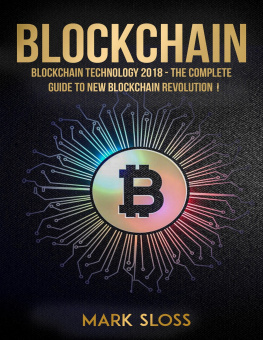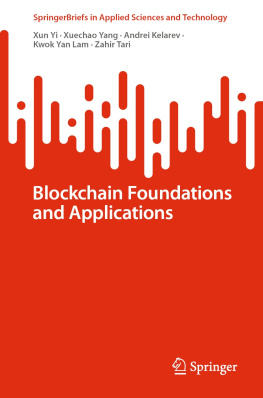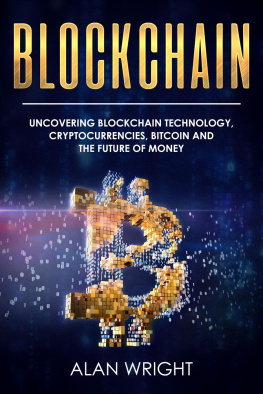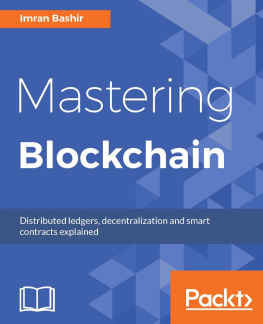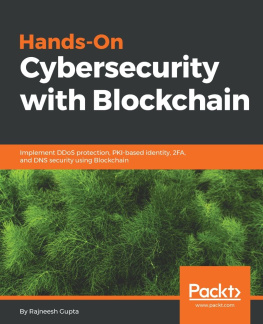Paul Valencourt - Blockchain Quick Reference
Here you can read online Paul Valencourt - Blockchain Quick Reference full text of the book (entire story) in english for free. Download pdf and epub, get meaning, cover and reviews about this ebook. year: 2018, publisher: Packt Publishing, genre: Home and family. Description of the work, (preface) as well as reviews are available. Best literature library LitArk.com created for fans of good reading and offers a wide selection of genres:
Romance novel
Science fiction
Adventure
Detective
Science
History
Home and family
Prose
Art
Politics
Computer
Non-fiction
Religion
Business
Children
Humor
Choose a favorite category and find really read worthwhile books. Enjoy immersion in the world of imagination, feel the emotions of the characters or learn something new for yourself, make an fascinating discovery.
- Book:Blockchain Quick Reference
- Author:
- Publisher:Packt Publishing
- Genre:
- Year:2018
- Rating:4 / 5
- Favourites:Add to favourites
- Your mark:
Blockchain Quick Reference: summary, description and annotation
We offer to read an annotation, description, summary or preface (depends on what the author of the book "Blockchain Quick Reference" wrote himself). If you haven't found the necessary information about the book — write in the comments, we will try to find it.
Understand the Blockchain revolution and get to grips with Ethereum, Hyperledger Fabric, and Corda.
Key Features- Resolve common challenges and problems faced in the Blockchain domain
- Study architecture, concepts, terminologies, and Dapps
- Make smart choices using Blockchain for personal and business investments
Blockchain Quick Reference takes you through the electrifying world of blockchain technology and is designed for those who want to polish their existing knowledge regarding the various pillars of the blockchain ecosystem.
This book is your go-to guide, teaching you how to apply principles and ideas for making your life and business better. You will cover the architecture, Initial Coin Offerings (ICOs), tokens, smart contracts, and terminologies of the blockchain technology, before studying how they work. All you need is a curious mind to get started with blockchain technology. Once you have grasped the basics, you will explore components of Ethereum, such as ether tokens, transactions, and smart contracts, in order to build simple Dapps. You will then move on to learning why Solidity is used specifically for Ethereum-based projects, followed by exploring different types of blockchain with easy-to-follow examples. All this will help you tackle challenges and problems.
By the end of this book, you will not only have solved current and future problems relating to blockchain technology but will also be able to build efficient decentralized applications.
What you will learn- Understand how blockchain architecture components work
- Acquaint yourself with cryptography and the mechanics behind blockchain
- Apply consensus protocol to determine the business sustainability
- Understand what ICOs and crypto-mining are and how they work
- Create cryptocurrency wallets and coins for transaction mechanisms
- Understand the use of Ethereum for smart contract and DApp development
Blockchain Quick Reference is for you if you are a developer who wants to get well-versed with blockchain and its associated concepts and terminologies. You will explore the working mechanism of a decentralized application with the help of examples. Business leaders and blockchain enthusiasts will also find this book useful, as it will help you effectively address challenges and make better personal and business investments.
Downloading the example code for this book You can download the example code files for all Packt books you have purchased from your account at http://www.PacktPub.com. If you purchased this book elsewhere, you can visit http://www.PacktPub.com/support and register to have the files e-mailed directly to you.
Paul Valencourt: author's other books
Who wrote Blockchain Quick Reference? Find out the surname, the name of the author of the book and a list of all author's works by series.



